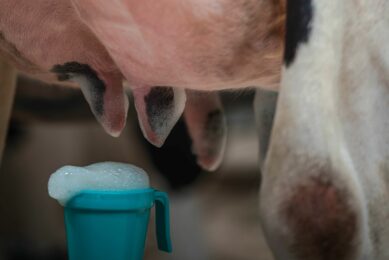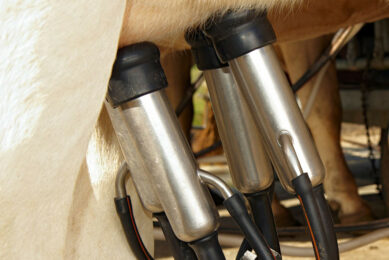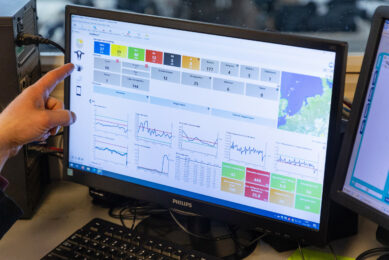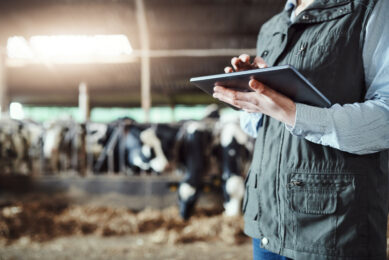Cow personality and adaptation to automatic milking
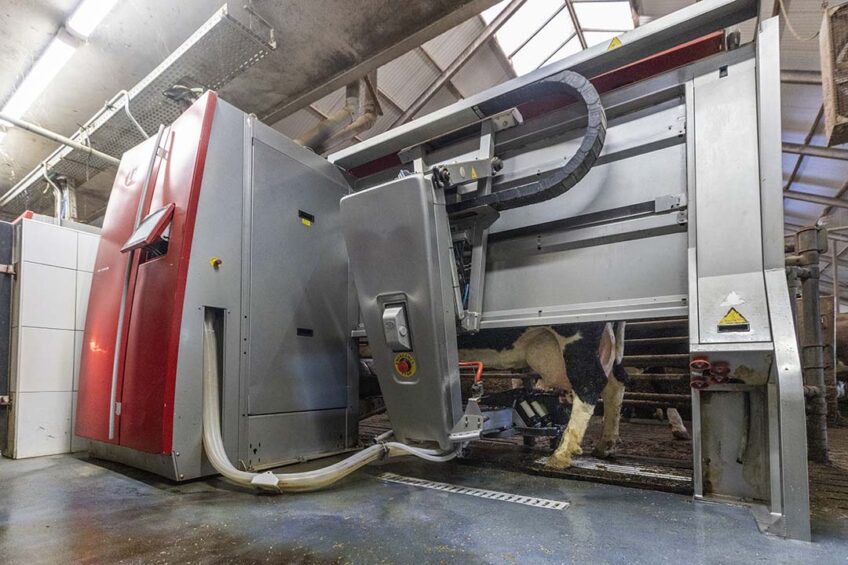
A new study published in the Journal of Dairy Science indicates that personality traits of dairy cows are associated with adaptation and performance in an automatic milking system. The study highlights which personality traits are consistent across the transition period.
Dairy cows undergo an adaptive period during changes to a new milking system, such as an automatic milking system (AMS). During this period, they can experience stress, affecting their health and productive performance. How cows cope with this period depends on their individual characteristics or personalities.
In this study, researchers determined how dairy cow personality traits affect their adaptation to an AMS upon parturition, and whether these personality traits are consistent across the transition from gestation to lactation. During the pre-calving test period, personality traits used were exploration, activeness and boldness, while during the post-calving test period, exploration and activeness personalities were used.
Measuring personality traits
During the pre-calving test period, researchers used personality traits of exploration (sniffs or licks an object or surface), activeness (time spent moving or exploring) and boldness (time spent standing and playing and touching a novel human). Both primiparous and multiparous Holstein cows were assessed for personality traits using a combined arena test conducted 24 days before parturition and 24 days after first introduction to an AMS, which occurred about 3 days after parturition.
Several measurements were recorded, including milk yield per AMS visit, number of visits, frequency of refusals, milking duration, incomplete quarters and milkings where the milking machine was unable to find teats. Cows were fetched a minimum of twice per day for milking when notified by the AMS if they had not been milked for 8 hours (that is, they had not voluntarily approached the AMS). Behavioural data from day 1 to day 7 after introduction to the AMS were associated with the pre-calving personality traits, while data from day 21 to day 27 after introduction to the AMS were summarised by cow and associated with the post-calving personality traits.
Personality traits and performance
Exploration trait
Cows that scored high for the exploration trait were more consistently fetched for milking every day from day 1 to day 7 after introduction to the AMS. This indicated that the more exploratory cows took longer to adapt to the AMS, which was not expected. On the other hand, cows that scored high for the exploration trait in the post-calving test had no detected association with any measures of adaptation and performance from day 21 to day 27 after introduction to the AMS.
The post-calving trait of exploration was also weakly associated with the exploration trait from the pre-calving test. According to the researchers, the lack of performance association results for the trait of exploration in the post-calving test may be due to slightly different behaviours being picked up between the pre-calving and post-calving periods.
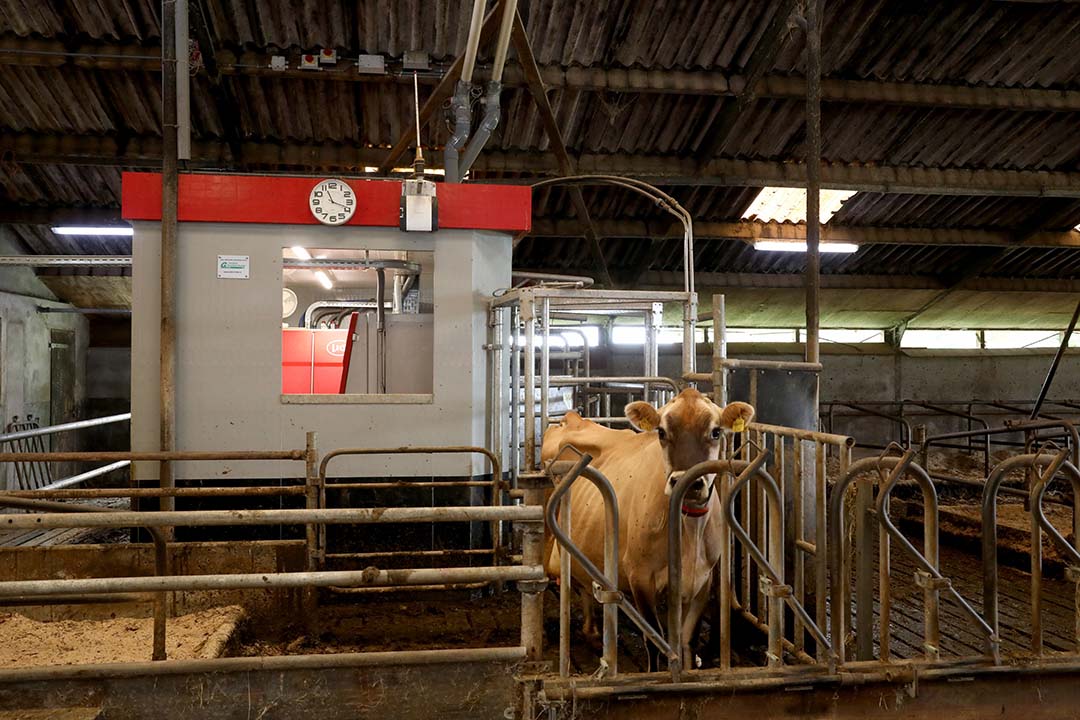
Activeness trait
In further support of the notion that more active animals may adapt better to automated technologies, cows in the present study that scored high for the activeness trait in the pre-calving test tended to have fewer fetching events per day in the first 7 days after introduction to the AMS compared with cows that scored low for the activeness trait. This showed that active cows adapted to the AMS sooner due to more voluntary visits on average.
During the period from day 21 to day 27 after introduction to the AMS, cows that scored high for the activeness trait in the post-calving personality test tended to have more frequent visits per day, milkings per day and voluntary visits per day, which was interpreted as a continuation of a better adaptation to the AMS.
Even though they visited the AMS more frequently, cows that scored high for the activeness trait produced lower milk yields than non-active cows, which was related to the possibility of more energy being allocated to locomotion over milk synthesis in active cows.
Boldness trait
As boldness was associated with parity in previous studies (older cows having higher boldness), performance measurements were analysed for primiparous and multiparous cows separately. In the current study, multiparous cows that scored high for the boldness trait in the pre-calving test tended to have a higher average milk yield in the first 7 days after introduction to the AMS. This indicated that bolder cows performed better in the AMS than fearful or less bold multiparous cows.
“Bold cows may have produced a higher milk yield compared with fearful cows, as the fearful cows may be allocating their energy toward the fear response to humans or other novel objects,” researchers said.
The trait of boldness showed some inconsistency across the transition phase, as there was no corresponding trait in the post-calving test. “With the stress of the transition phase, including the initiation of lactation and environmental changes, the trait of boldness may have become plastic during the post-test, and in turn was not presented in the post-calving test results,” they concluded.
Conclusion
As demonstrated by the association in the trait of activeness between the pre-calving and post-calving tests, as well as the association (although weak) in the trait of exploration between the pre-calving and post-calving tests, the researchers concluded that there is consistency in personality across the transition phase.
Cows that scored high for boldness, high for activeness and low for exploration tended to adapt to the AMS better immediately after introduction, as indicated by less fetching from day 1 to day 7 after introduction to the AMS. Cows that scored high for boldness and low for activeness in the pre-calving test performed better in the first 7 days after introduction to the AMS, as evidenced by more consistency in milk yield or higher milk yield. Similarly, those cows that scored low for activeness in the post-calving test tended to have higher milk yield from day 21 to day 27 after introduction to the AMS.
“Overall, this exploratory study demonstrates that dairy cow personality is consistent across the transition period, and some personality traits are associated with milking behaviour and milk yield when milked on an AMS. Therefore, assessment of dairy cow personality may be useful for a selection of cows who might best adapt to and use an AMS,” they remarked.
Original article by J. E. Brasier, A. J. Schwanke, and T. J. DeVries. 2023. Effect of dairy cow personality traits on their adaptation to an automated milking system following parturition.



